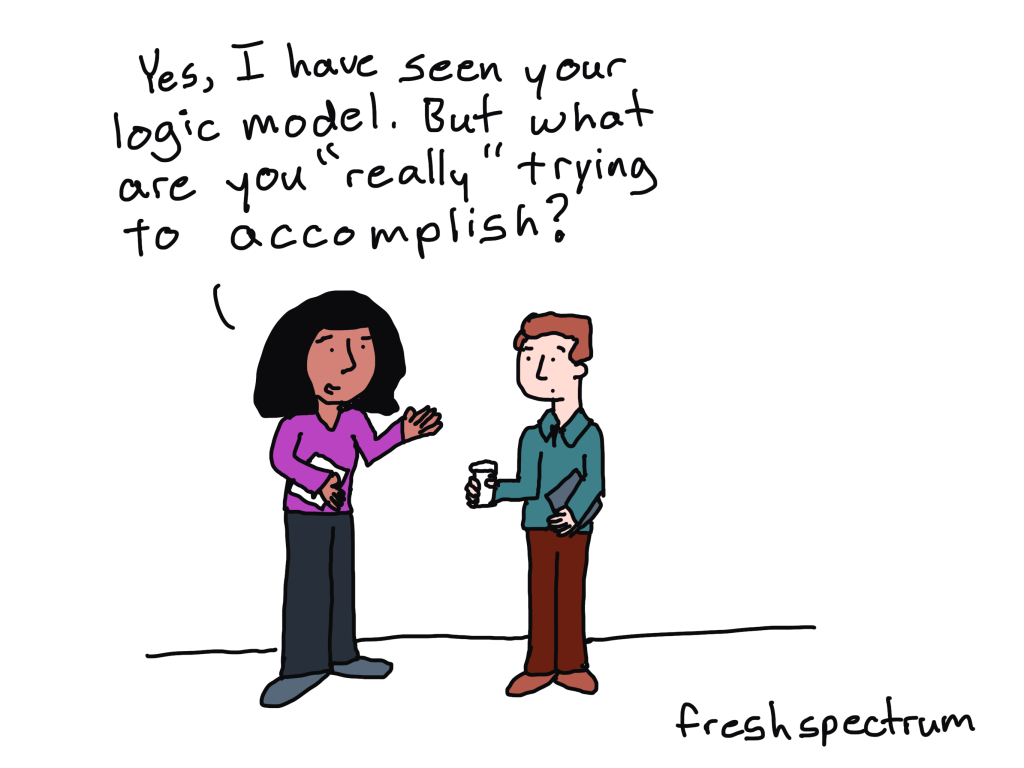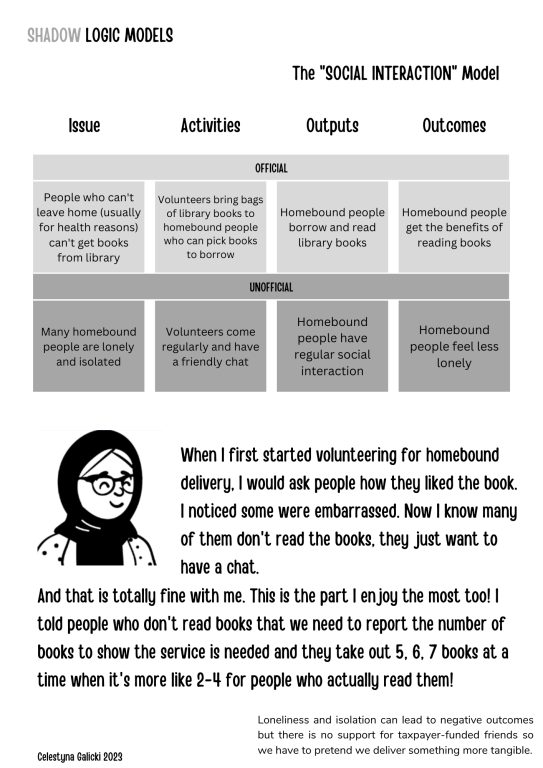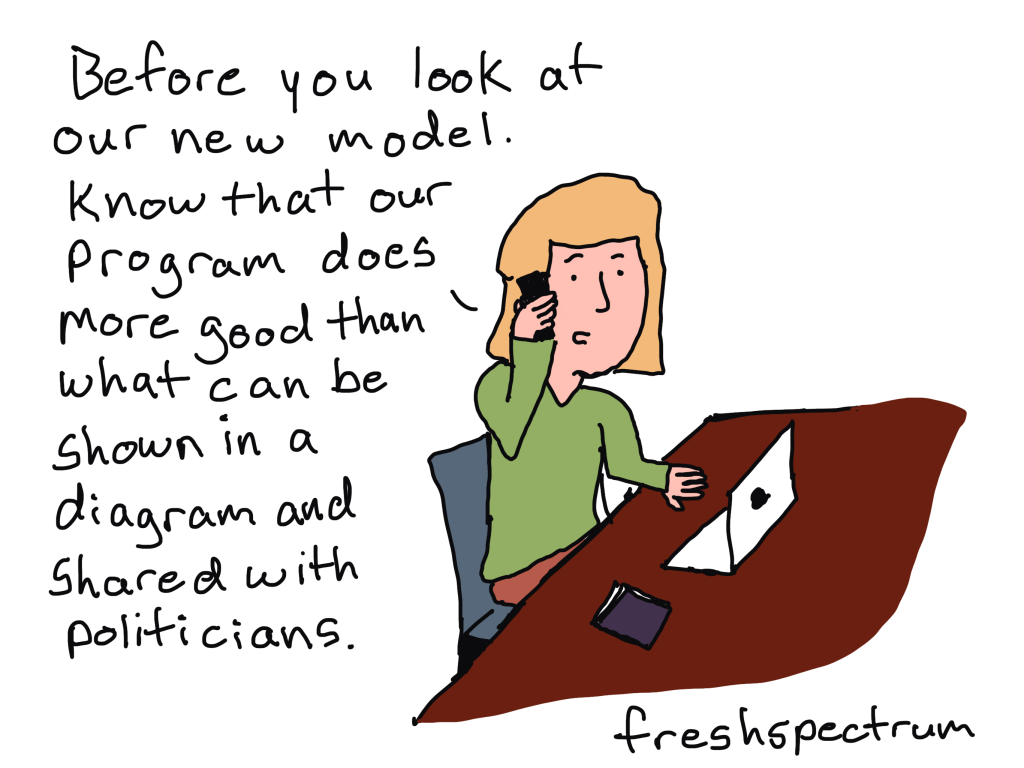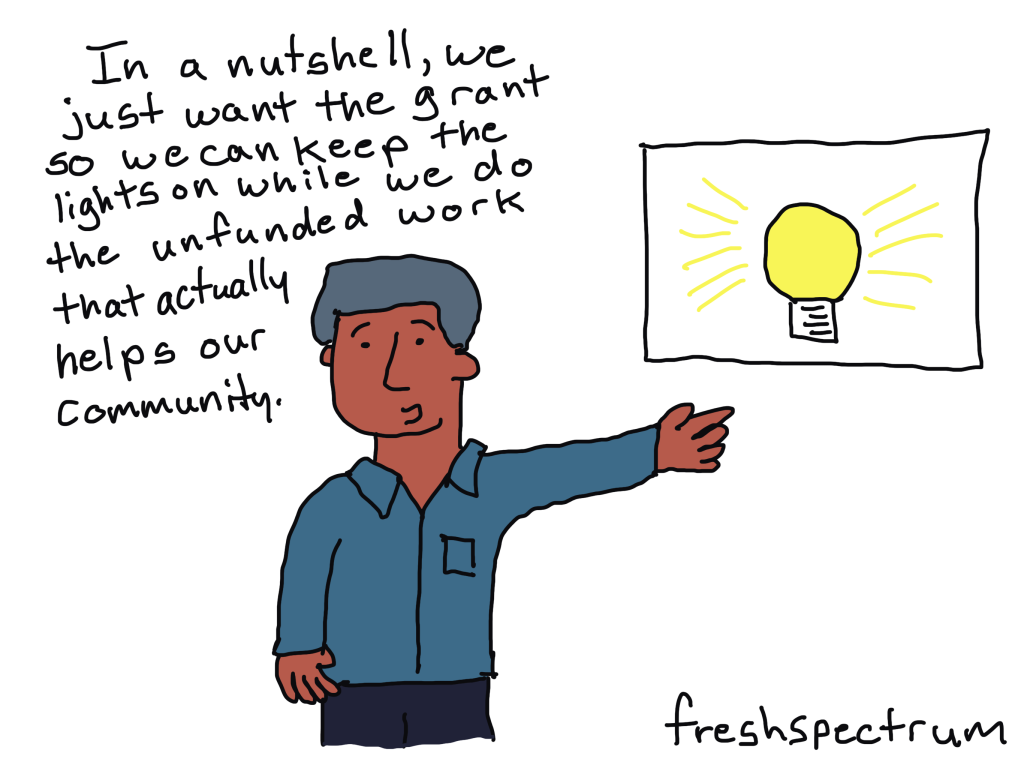This is an Eval Central archive copy, find the original at freshspectrum.com.
Over the coming year I hope to spend a little time on this blog showcasing some of the interesting work created by members of my Information Design Academy.
In today’s post we’ll look at something created by Celestyna Galicki that we started calling a Shadow Logic Model. Most of the words (and the Shadow Logic Model design) are Celestyna’s. I only added a few quick observations (and the cartoons).

Who is Celestyna Galicki?
Celestyna is an evaluator currently working in an evaluation capacity building role in local government in New Zealand. You can learn more by visiting Celestyna’s LinkedIn profile.
So just what is a Shadow Logic Model? [Celestyna]
This term describes a situation when the programme’s official logic model does not work (outputs do not lead to outcomes) but there is an unofficial logic model that works and produces outcomes that are important and valuable for someone. “Someone” can be the intended beneficiaries of the official logic model, the funder of the programme, people implementing the programme, the local community etc.
We are not talking about corruption here – money is spent as intended and all funded activities take place. If a shadow logic model is in place, most people involved in the program, and sometimes also the funder, know about it – they want to continue the programme because they find the benefits of the shadow logic model important enough. However, funding structures, political considerations, public opinion and other factors require them to pretend that they implement the official logic model if they want to continue.
How do you discover a shadow logic model? [Celestyna]
There is palpable awkwardness at first when workshopping logic models and evaluation with teams that have a shadow logic model. Discovering the shadow logic model is one of the skills academia did not teach me and I had to develop it with practice.
The way I usually approach this as an evaluator is to acknowledge the “unintended positive outcomes” and their value and evidence alongside the intended outcomes.
One of Celestyna’s Shadow Logic Models [Celestyna]

A few quick observations from Chris
I love this concept and Celestyna’s design. Let’s take a second to break down the design.
- First off there is a simple official logic model. This logic model is then mirrored with an unofficial logic model.
- A volunteer story illustrated with a simple cartoon figure humanizes the program and really sets the model within the appropriate context. The shadow logic model could have existed without this piece but I don’t think it would be nearly as compelling.
- At the bottom there is a single sentence takeaway which does a good job of ending the design with a quick “so what?”

What value exists in finding and constructing shadow logic models? [Celestyna]
The outcomes of official and shadow logic models provide important insights into what is and is not considered valuable by those who make decisions.
Common shadow outcomes include:
- social contact and friendship for those lonely and isolated (as in the example in the illustration)
- relationship building / relationship repair between the community and authorities or funders, signalling that the authorities care about something and take it seriously
- outcomes valued by indigenous or migrant communities that do not fit into Western frameworks, e.g. mana enhancement
- the benefits of basic services such as free transport or free food provided as part of the programme
- improving the reputation of a place/neighbourhood etc.

So what do you think? Could you see yourself creating something like this for your own program?
Let us know in the comments 